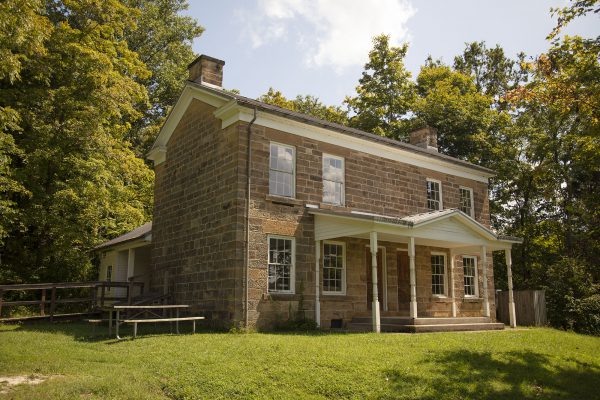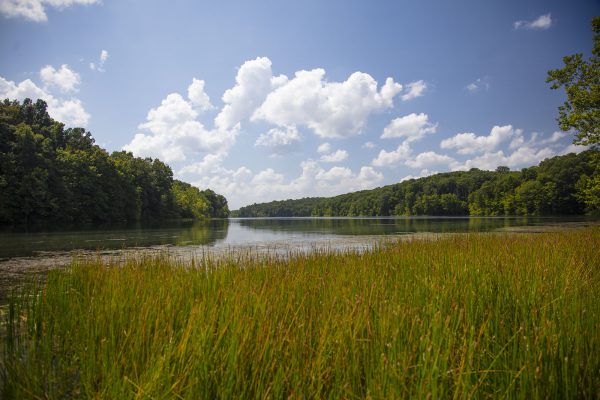For my fifth and final trip into the Hoosier National Forest, I visited the Little Africa Cemetery, Buzzard Roost, the Rickenbaugh House, and Clover Lick Barrens. Like my other excursions into the forest, this trip provided a wonderful adventure into the very heart of Indiana’s great Hoosier National Forest.
Little Africa Cemetery Of all the locations in the HNF that I visited this summer, this was the hardest to find. The Little Africa Cemetery, known officially as the Thomas and Roberts Family Cemetery, is located deep in the heart of the HNF, just south of Paoli. To get there, travel south out of Paoli on US Route 150 toward Chambersburg. Before you get to Chambersburg, turn south on Grease Gravy Road (yes, that’s its real name). The road will eventually end at the Lick Creek Trail head. Park and follow the signs back. It is a bit of a hike, so be prepared. Bring water. Cell phone service is non-existent. The United States Forest Service has a great map here with more detail (pdf).
The cemetery’s informal name comes from the Lick Creek African American Settlement which was a 19th century African American community in rural Orange County. Black Americans had established the community around 1820. Around 1860, 260 African Americans lived at or near the Lick Creek African American Settlement. After the end of the Civil War, the population began to dwindle. The last known resident was William Thomas, who sold the land in 1902. All that’s left of the community today is the cemetery.
Rickenbaugh House My next stop was the Rickenbaugh House, located on the northern edge of Lake Celina in the Indian-Celina Lake Recreation Area. The house was built by Jacob Rickenbaugh in 1874 and has been preserved as an interpretive center. Getting there is easy, travel south on State Road 37 through St. Croix, Indiana. The entrance to the Celina Lake Recreation Area is about 2.3 miles south of St. Croix on the west side of the road.
The house served as a dwelling, but also as a post-office from 1880-1951. Ella Rickenbaugh served as the postmaster from 1880-1895 and from 1905-1940. The 156-acre lake that extends out below the Rickenbaugh House was built in 1968 as a flood control measure, but now, according to the Forest Service, it has become a popular fishing and boating recreational area. It’s also a great place to camp. You can read more about the location here.
Mano Point and the Clover Lick Barrens From the Rickenbaugh House, we traveled south to the Ohio River to visit Mano Point and the Clover Lick Barrens, both of which are located just north of Derby along US Highway 66. Mano Point is a fishing access point to the Ohio River. There’s also a boat ramp. The location is also unique in that very ancient Native American artifacts were found in the area in the 1960s. They date back several thousand years.
Just north of Mano Point are the Clover Lick Barrens, which offer visitors a view of some fantastic mid-summer wildflower viewing. Indiana has some amazing spring-time locations for wildflower observation, but the Clover Lick Barren is one of the few locations showcasing summer blooms. For more information about the blooming period, visit the Forest Service’s website here.
Buzzard Roost Our final stop was Buzzard Roost, a fantastically named recreation area accessible for walking, picnicking, and camping. Camping, though, is primitive, so if you plan to ‘spend the night,’ come prepared. Buzzard Roost provides a spectacular view of the Ohio River. There’s also a half-mile trail that snakes through this area of the Hoosier National Forest offering some great views of the HNF.
As With All Trips to the HNF... ...bring sunscreen, bug spray, and good hiking boots. We went in summer, but the trails are accessible and open during all times of year. Water and cell service are not available at these sites, so make sure you come prepared.









